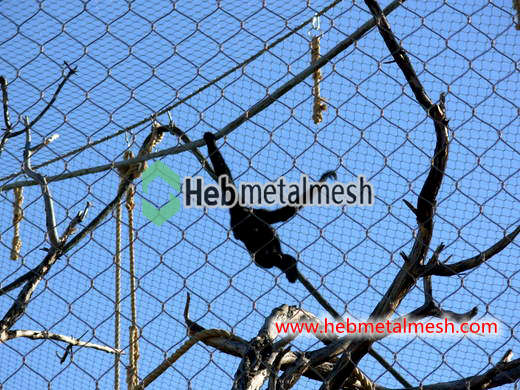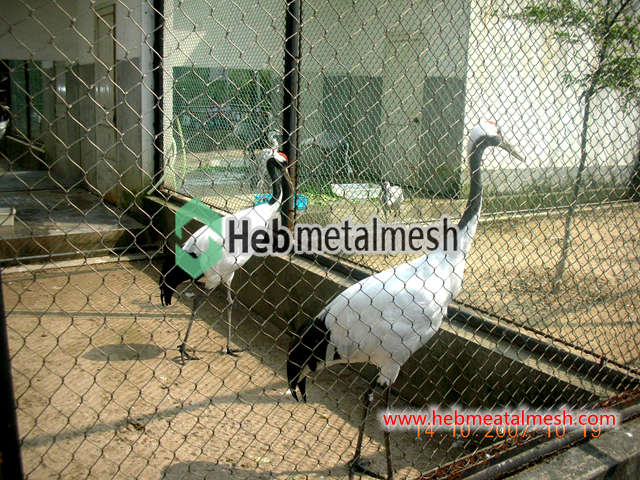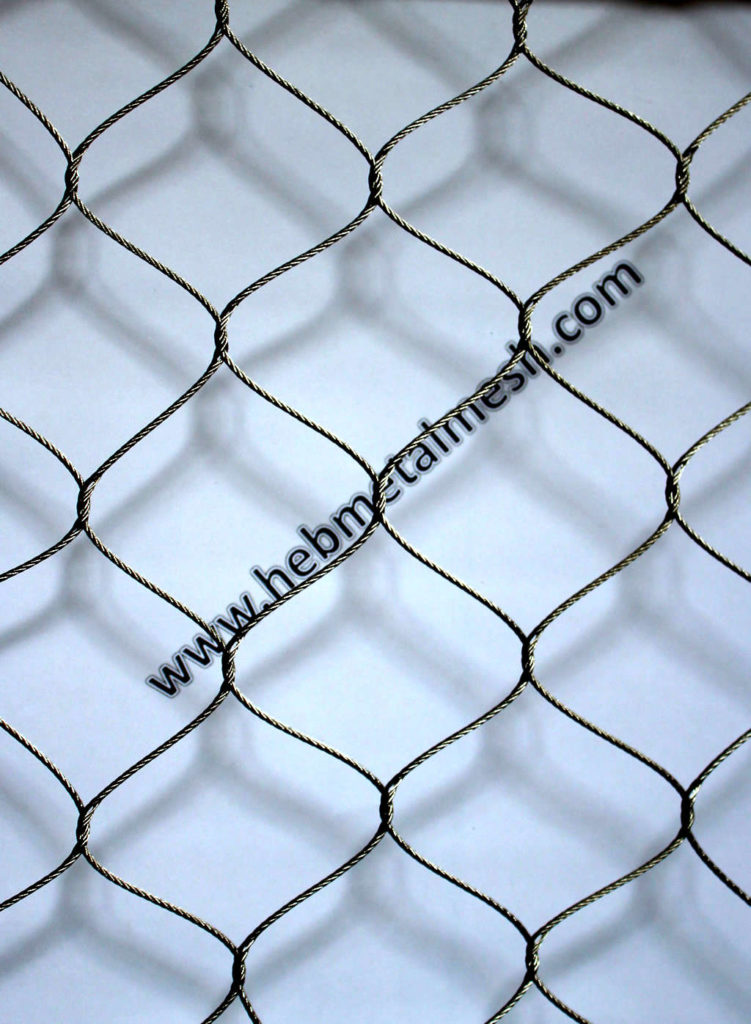Introduction to Fencing Products
Fencing products play a crucial role in various sectors, serving not only as physical barriers but also as instruments of safety and security. These products are widely utilized in agricultural settings to protect livestock and crops, in residences to establish privacy, and in commercial areas to safeguard premises. The significance of fencing extends beyond mere containment; it also contributes to the aesthetic appeal of a property while serving as a deterrent to unauthorized access.
The market presents an extensive range of fencing types, each designed to cater to specific needs and applications. For instance, chain link fencing is favored for its durability and transparency, making it ideal for sports fields and playgrounds. On the other hand, wooden fences offer a natural look that aligns well with residential landscapes, providing not just security but also a visual enhancement. Additionally, specialized products like wire rope mesh are increasingly employed in wildlife protection efforts, ensuring the safe enclosure of animals while maintaining an unobtrusive presence in their natural habitats.
Materials used in fencing products vary widely, including but not limited to wood, metal, vinyl, and composite options. Each material brings unique advantages, whether it’s the rust-resistance of galvanized steel, the low maintenance of vinyl, or the classic charm of wood. Consumers have the flexibility to choose based on their specific requirements, budget, and desired aesthetics.
Furthermore, the growing awareness of sustainability has led to the emergence of eco-friendly fencing solutions, which utilizes reclaimed materials and minimizes environmental impact. As the industry evolves, innovations in fencing products continue to emerge, making it essential for consumers to stay informed about the best options for their individual needs. A comprehensive understanding of these diverse fencing solutions paves the way for informed decision-making in securing properties and safeguarding wildlife.
Understanding Wire Rope Mesh Fencing
Wire rope mesh fencing is a distinctive and functional solution widely utilized in various sectors, particularly in agricultural and industrial settings. The construction typically involves high-tensile wire strands intricately woven together, creating a flexible yet robust barrier. This design provides several advantages, offering both strength and adaptability. Wire rope mesh is generally made from galvanized steel or stainless steel, materials known for their durability and resistance to environmental wear and tear, making them ideal for long-term applications.
One of the primary benefits of wire rope mesh fencing lies in its versatility. Due to its ability to stretch, it can conform to uneven terrains and accommodate different shapes, ensuring a secure and stable installation. Furthermore, the open structure of the mesh allows for visibility and air circulation, which is beneficial, especially in agricultural scenarios where livestock need to be monitored. This fencing product is commonly employed to safeguard crops, as it can deter unwanted wildlife while allowing farmers to maintain visibility over their fields.
Despite its numerous advantages, there are also some drawbacks to consider. Wire rope mesh fencing may not be suitable for all situations, particularly where heightened security is a requirement. The mesh’s openness can be a vulnerability, as it might not deter more determined intruders compared to solid barriers. Additionally, the initial investment for wire rope mesh can be higher than traditional wooden fencing, although many users find the longevity and minimal maintenance of this fencing product to be cost-effective over time.
In conclusion, wire rope mesh fencing serves as a practical and adaptable solution within the realm of fencing products. Its unique features make it particularly advantageous for agricultural and industrial applications, though its limitations in terms of security need to be carefully weighed based on situational needs.

Animal Fencing: Keeping Livestock Safe
Animal fencing plays a crucial role in maintaining the safety and security of livestock on a farm. Various types of fencing products are available, each designed to meet specific needs based on the type of animals being contained. Common options include barbed wire, electric fencing, and woven wire, each offering distinct advantages and features. Choosing the right type of fencing is essential for ensuring that animals remain secure within their designated areas while also preventing outside threats.
Barbed wire is one of the oldest and most traditional fencing products used for livestock containment. Its sharp, protruding barbs discourage animals from trying to breach the fence, making it particularly effective for cattle and larger livestock. However, barbed wire can pose risks of injury to animals, so careful consideration must be given to its use and installation. In contrast, electric fencing has gained popularity due to its ability to deliver a safe but effective shock to animals attempting to escape. This type of fencing is flexible and can be easily adjusted to the needs of different livestock, making it a versatile option for farmers seeking to ensure animal safety.
Woven wire fencing is another effective option, particularly for containing smaller livestock such as sheep and goats. Its tightly woven design not only provides strong containment but also minimizes the risk of animals getting their heads caught. When selecting fencing products, it is crucial to evaluate the type of animals being kept, as well as their habits and behaviors. For example, some animals require higher fencing due to their tendency to jump or climb, while others may require added reinforcement to deter digging or burrowing.
Ultimately, the effectiveness of animal fencing lies in understanding the specific needs of livestock. Proper installation techniques and routine maintenance are also vital factors that contribute to the longevity and effectiveness of fencing systems. By prioritizing the right fencing products and preventative strategies, farmers can successfully protect their animals from potential dangers and escape.
Aviary Fencing: Protecting Bird Habitats
Aviary fencing plays a crucial role in creating secure and conducive environments for birds, whether they are being raised in captivity or preserved for conservation purposes. Such fencing systems are designed specifically to protect birds from predators, prevent accidental escapes, and ensure their overall well-being. The importance of using the right materials cannot be overstated as they contribute not only to the safety of the birds but also to the aesthetic appeal of the aviary.
Common materials utilized in aviary fencing include wire mesh, netting, and solid panels. Wire mesh is a favored choice due to its durability and versatility, offering an effective barrier against both aerial and ground predators while enabling adequate airflow and visibility. Smaller gauge wire mesh is often selected to ensure that even the smallest birds cannot exploit any gaps. Additionally, aviary netting is often used to cover the top of the enclosure, providing protection from raptors and other birds of prey. This material is particularly useful for larger enclosures where traditional fencing products might fall short of safeguarding against aerial threats.
When designing an effective aviary fencing system, several important features must be considered. It is essential to incorporate smooth edges to prevent injuries, and to ensure that the structure remains stable and secure under various weather conditions. Given the behavioral characteristics of different bird species, the design should also account for adequate space, allowing for flight and interaction among the birds. Furthermore, while functionality is paramount, aesthetics should not be overlooked; a well-designed aviary can blend seamlessly into its natural surroundings while providing a safe haven for avian residents.

Comparing Different Fencing Materials
When considering fencing products, the choice of material plays a significant role in achieving the desired aesthetic appeal and functional capabilities. Each material—wood, metal, vinyl, and composite—has its unique attributes that can influence the overall effectiveness and longevity of a fence.
Wood is one of the most traditional fencing materials, offering a natural look that can enhance the beauty of any property. It is available in various species, allowing homeowners to select based on budget and desired aesthetic. While wood provides excellent privacy and can be easily customized through paint or stains, it requires regular maintenance to prevent rot and pest damage. On average, wooden fences may last between 10 to 15 years depending on the environmental conditions and care.
Metal fencing products, particularly those made from wrought iron or aluminum, are known for their strength and durability. Metal options can withstand extreme weather conditions and provide a high level of security. They require minimal maintenance apart from occasional rust prevention treatments. However, the aesthetic appeal may not be as warm or inviting compared to wood. Additionally, the upfront cost can be higher, but the longevity often offsets this investment.
Vinyl fencing presents a modern alternative that blends durability with minimal upkeep. It is resistant to fading, rotting, and insect damage, making it perfect for those seeking a long-lasting solution. Vinyl also comes in various styles and colors, providing versatility in design. However, it is more expensive than wood and may be less robust under heavy impacts.
Composite fencing products combine materials such as wood fibers and synthetics, mimicking the appearance of wood while offering enhanced durability. This option is resistant to splintering and decay, contributing to a longer life span. While the initial costs can be on the higher side, the reduced maintenance needs make it an appealing choice for homeowners looking for sustainability in their fencing investments.
Understanding the pros and cons of these materials helps consumers select the most appropriate fencing products tailored to their specific requirements and preferences.
Trends in Fencing Products
The fencing industry has been evolving rapidly, responding to the rising demands for security, aesthetic appeal, and environmental sustainability. Advancements in technology have significantly influenced fencing products, introducing features such as smart fencing solutions equipped with sensors and cameras. These modern innovations allow property owners to monitor their perimeters in real-time, coupling traditional fencing materials with cutting-edge technology to create a comprehensive security system. This trend towards integrating technology into fencing systems is becoming increasingly popular among both residential and commercial clients.
Additionally, eco-friendly materials are gaining traction in the fencing sector. Manufacturers are increasingly opting for recycled and sustainable resources, such as composite materials derived from post-consumer plastics or sustainably sourced wood. This shift not only reduces the environmental impact of fencing products but also caters to the growing consumer preference for environmentally responsible options. The utilization of these materials not only enhances the durability and longevity of fences but also appeals to a more environmentally-conscious demographic.
Design trends also play a crucial role in the evolution of fencing products. More homeowners and businesses are looking for fencing solutions that offer enhanced security without compromising aesthetic appeal. The demand for customizable designs, which offer both functionality and visual charm, is on the rise. From modern aluminum and wrought iron fences with intricate designs to natural wood fences that blend seamlessly with landscaping, the options are increasingly diverse. This focus on combining security with aesthetics reflects a broader consumer desire for fencing products that enhance the overall appearance of their properties while providing reliable protection.
As the market continues to evolve, understanding these trends in fencing products is essential for consumers seeking to invest in the best fencing options available today.
DIY vs. Professional Installation
When it comes to installing fencing products, homeowners often face the decision of whether to tackle the project themselves or hire a professional contractor. Each approach has its own set of benefits and drawbacks that should be carefully considered based on individual circumstances, skills, and resources. DIY installation can be an appealing option for those who enjoy hands-on projects and wish to save on labor costs. Additionally, it allows for complete control over the design and layout of the fencing. However, this approach requires a thorough understanding of the materials involved, including various fencing products such as wire rope mesh and wooden panels, and the skills to work with them effectively.
On the other hand, professional installation comes with its own advantages. Hiring experts can provide peace of mind, as they bring experience and knowledge to the project, ensuring that the fence is installed correctly and efficiently. Professionals are also familiar with local regulations and can navigate any necessary permits required for installation. The expense associated with hiring a contractor may be a concern for some, but considering the potential for mistakes and the time involved in a DIY project can make professional help a viable option.
Assessing your own skills is vital in this decision-making process. If you possess basic carpentry skills, a DIY approach may be manageable, especially if the fencing product in question is relatively straightforward to install. However, for more complex systems, such as electric or decorative fencing products, it might be more prudent to consult with professionals. Ultimately, the decision will depend on each individual’s comfort level with tools, materials, and the overall complexity of the fencing installation required for their property.
Maintenance Tips for Fencing Products
To ensure the longevity and effectiveness of fencing products, proper maintenance is essential. Different types of fencing materials, such as wire rope mesh, chain link, wood, and vinyl, require specific care to maintain their structural integrity and aesthetic appeal. Regular inspections should be conducted to identify or prevent any potential damage caused by environmental factors, pests, or wear and tear.
Cleaning is a fundamental aspect of fencing maintenance. For metal fencing products like wire rope mesh or chain link fences, periodic cleaning can prevent rust and corrosion. A mixture of mild soap and water can be used along with a soft brush to remove any dirt or debris. Be sure to rinse thoroughly and allow the fencing to dry completely. Wooden fences, on the other hand, should be washed with a wood cleaner specifically designed for outdoor use to avoid damage. Additionally, applying a sealant every few years can create a protective barrier against moisture and pests.
Repair techniques also play a crucial role in the upkeep of fencing products. Promptly addressing any issues, such as loose components, missing sections, or damaged panels, can help prolong the life of the fence. For instance, occasional tightening or replacement of wire strands in wire rope mesh may be necessary to maintain tension and structural safety. In the case of wood fencing, any rotting or damaged boards should be replaced to prevent deterioration. It’s recommended to inspect fences more rigorously after severe weather events, as shifting ground or strong winds can lead to unseen damages.
Seasonal considerations are another important aspect of fencing maintenance. Preparing fencing products before winter, such as treating wood with a protective agent or checking the stability of fence posts, can prevent frost and thaw cycles from causing damage. In warmer months, maintaining adequate drainage around the fence line can avert rust and decay issues. By following these maintenance tips, stakeholders can ensure that their fencing products remain functional and visually appealing for years to come.
Conclusion
Selecting the appropriate fencing products for your specific needs is a crucial task that warrants careful consideration. As we’ve discussed, there is a diverse range of options available, including wire rope mesh, aviary fencing, and other specialized materials. Each type of fencing serves different purposes and varies significantly in terms of construction, durability, and aesthetic appeal. Understanding these distinctions is essential in helping you make an informed decision.
When evaluating fencing products, it is important to assess your unique requirements. For instance, if you are looking for a solution that offers security and containment for livestock, you may consider durable and robust options such as welded wire or stock fencing. On the other hand, for decorative purposes or to define boundaries in a garden, products like ornamental fencing may be more suitable. These choices must not only fulfill functional needs but also align with your aesthetic preferences.
Moreover, budget constraints play a significant role in the decision-making process. Fencing products are available across a range of price points, and it is vital to identify a balance between quality and affordability. Investing in higher-quality materials may lead to long-term savings, as they typically require less maintenance, thus reducing future expenditures.
In conclusion, choosing the right fencing product involves a comprehensive evaluation of your specific needs, budget considerations, and personal style. By considering these factors and exploring the variety of available fencing products, you can ensure that your investment will provide both functionality and visual appeal, enhancing your property for years to come.


